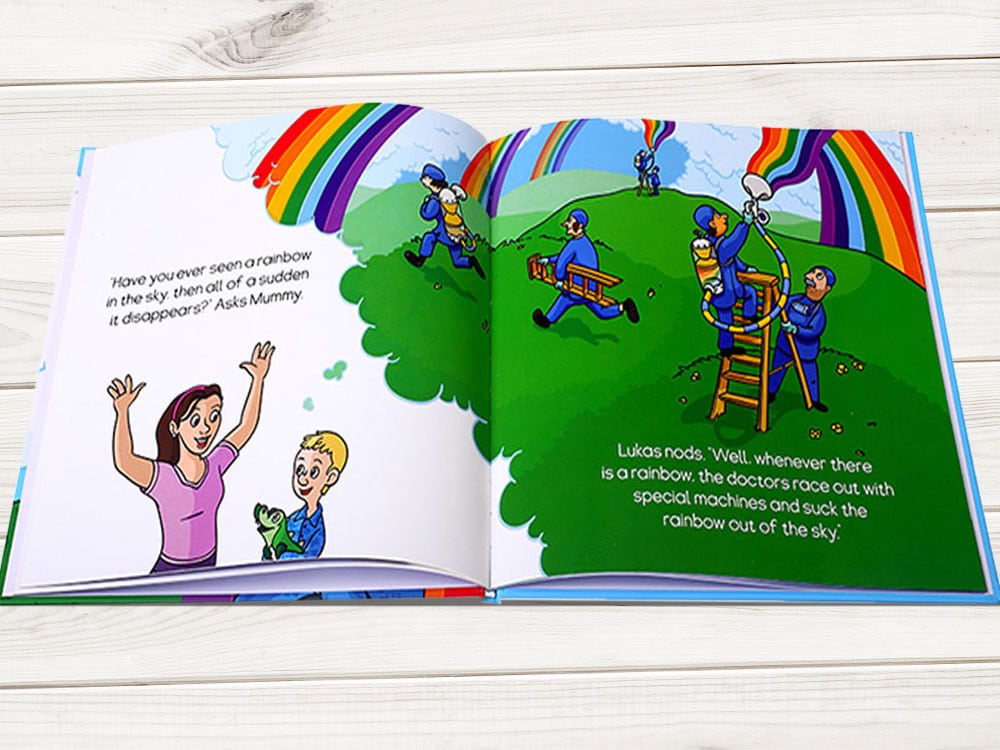Humans are innately motivated to tell stories. We all want to be heard, whether we are conversing with friends or coworkers in a social setting, or just catching up with family. That has been deeply entrenched in us since we were young children when it seemed that the content of our imaginations might run wild and not be scrutinized because it was fiction. Our recollections reverberated in our stories. This is why you can give that platform to your children. You can write your children’s book yourself.
Things You Must Consider While Writing Your Children’s Book
Keeping this in mind, even a story written for children is still a story. You are still working within the same framework. Only a few rules and specifications.
In light of this, it is imperative that you follow storytelling conventions. For a children's book, a beginning, middle, and end are still required. But showing is still preferred over telling. Choosing and sticking with a theme is still essential.
The basic framework of your story would not alter. So, just like any other writer, start by arranging your tale and developing some core characters. Treating these picture books as you would a novel. Take these points into consideration for your book:
Characters
A children's book, in particular, needs characters that inspire a strong and quick emotional response since weak characters can spoil any plot. Your viewers won't remain interested in the story if they don't immediately identify with the character.
Even if every aspect of your novel deserves consideration, make sure to give careful thought to how you'll portray your characters. The people who your readers (children) will most identify with are the characters. In contrast to a novelist, you can actively draw that relationship using this image.
Design
The majority of children's books rely mainly on illustrations to tell the story, with words included as support. Also, keep in mind that there should almost always be some educational components, and using language to do so is a fantastic approach to do so.
Consider how the book will be read. Is your children's book intended for young readers who will read independently? Or are you trying to reach a younger audience that parents or instructors will read to? In either case, you must create visuals that are instructive and understandable, along with text that is simple to read.
Knowledge
Again, every book ought to have a distinct purpose. In a novel, it marks the resolution of the plot; in a memoir, it marks the coming to light of life.
The aim of a children's book is almost always to educate the reader in some way. Even if the primary goal of your children's book is to entertain rather than to educate, including educational components will help kids relate to the subject matter. Additionally, it offers value, which is crucial for promoting your children's book.
How to Solve the Puzzle?
The process of writing a book is hard. Children's books can be challenging and perplexing at the same time. Like any book, you need to write the material, but you also need to consider how to organize it for a reader who is not like you at all.
You can learn important information about what makes a good children's book by reading and investigating other children's books, especially the best-selling ones. Think about how well the book covers these three important issues as you read it:
- Characters
- Design
- Knowledge (Education)
How can the writer develop likable, interesting characters? What lesson is the author attempting to teach? How does the artwork help the character and convey the message?
You need to come up with a way to make it funny despite all of those limitations. That could end up being the most difficult component of all. Have you ever read a children's book that was gloomy? None at all. Complex issues can be discussed, but the atmosphere must stay cordial. You run the risk of losing your audience if you don't.
Selling Your Children’s Book
Selling children's books is most effective when done directly through a network of potential clients, much like selling a self-published book.
This is where things become challenging because you either need to establish connections with nearby schools or children's organizations, or you need a captive local audience you can employ, like a connection to a bookstore. You'll probably have to work very hard in both situations.
However, authors of children's books have an advantage over authors of novels when selling by hand. You can arrange to read your book aloud while projecting the visuals at a nearby bookstore or library (again, you must first build connections to leverage). If it's good, a bunch of kids will get suddenly thrilled about your book, which will lead to a bunch of parents becoming similarly enthusiastic.
It can be more difficult, but not impossible, to persuade customers to visit a website in order to make a purchase. Your relationships will always be the basis of your marketing efforts for children's books, both those you have previously established and those you create through live readings.
If you're devoted to your story and prepared to put in the time necessary to produce a children's book, self-publishing is a great way to get the book published. Set your ideas into motion, start storyboarding those pages, and convey your tale to a group of eager, impressionable youth who are thirsty for information and engaging stories. Self-publishing is a fantastic alternative because you have complete control over the undertaking and can use print-on-demand to save costs. The price to prepare the book is the opposite of this. The cost of hiring an illustrator might be high. But if you find self-publishing difficult, you can always look for reputable children's book printing services on the internet. There are many children’s book printing services available on the internet that are quite reasonable.
We hope this blog post helps you with writing and publishing your first children’s book.





